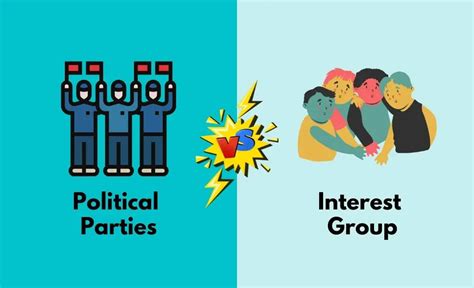Interest groups and political parties are two important parts of the American political system. Both of these organizations seek to influence government policy, and both have their own unique strengths and weaknesses. However, there are also some important similarities between interest groups and political parties.

Definition of Interest Groups and Political Parties
- Interest group is an organization that seeks to influence government policy on behalf of its members. Interest groups can be organized around a wide range of issues, such as business, labor, environmental protection, and civil rights.
- Political party is an organization that seeks to win elections and control government. Political parties nominate candidates for office, raise money, and mobilize their supporters.
Similarities Between Interest Groups and Political Parties
There are a number of similarities between interest groups and political parties. These similarities include:
- Influence on government policy. Both interest groups and political parties seek to influence government policy. Interest groups do this by lobbying elected officials and government agencies. Political parties do this by winning elections and controlling government.
- Organization. Both interest groups and political parties are organized into hierarchies. Interest groups typically have a board of directors, staff, and members. Political parties have a national committee, state committees, and local committees.
- Membership. Both interest groups and political parties have members. Interest groups typically have members who share a common interest. Political parties typically have members who share a common ideology.
- Funding. Both interest groups and political parties need funding to operate. Interest groups typically raise money from their members and from corporations. Political parties typically raise money from their members, from corporations, and from individuals.
Differences Between Interest Groups and Political Parties
There are also some important differences between interest groups and political parties. These differences include:
- Goals. Interest groups seek to influence government policy on behalf of their members. Political parties seek to win elections and control government.
- Membership. Interest groups typically have members who share a common interest. Political parties typically have members who share a common ideology.
- Funding. Interest groups typically raise money from their members and from corporations. Political parties typically raise money from their members, from corporations, and from individuals.
Conclusion
Interest groups and political parties are two important parts of the American political system. Both of these organizations seek to influence government policy, and both have their own unique strengths and weaknesses. However, there are also some important similarities between interest groups and political parties. These similarities include their hierarchical structure, their membership, their funding, and their influence on government policy.
